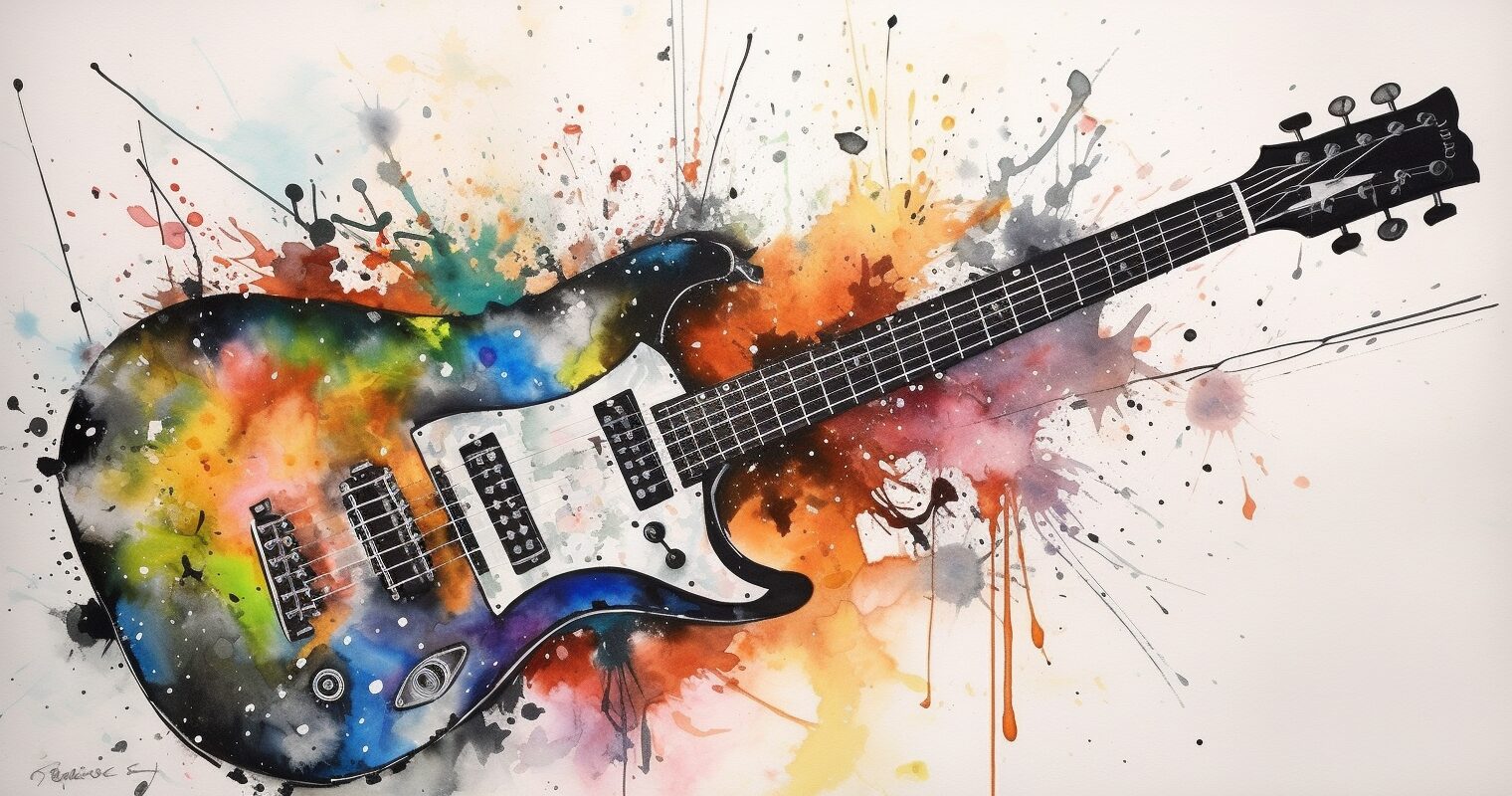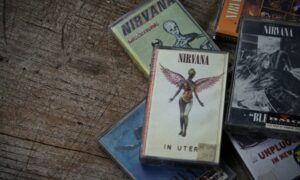
Alternative rock. The genre that’s been consistently defying the mainstream and carving its path through the decades. Or so they say. But how did it all start? And where is it heading? We’re about to dive deep into the convoluted world of alternative rock artists. A world filled with angst-ridden lyrics, raw guitar riffs, and a whole lot of flannel. A world so large, this article won’t cover every nook and cranny (sorry New Wave?).
The Birth of Alternative Rock Artists: More Than Just Bad Haircuts
Alternative rock, or alt-rock, emerged in the 1980s as a counter-culture reaction to the polished, image-focused mainstream rock of the time. It was raw, it was real, and it was different.
The Pioneers of Alternative: Not All Heroes Wear Capes
Ah, the early days of alternative rock. A time when bands like R.E.M., The Smiths, and The Cure were supposedly pioneering a new sound. A sound that was raw, real, and resonated with a generation seeking something more authentic. Or at least, that’s the story we’re often told.
R.E.M., with their jangly guitars and cryptic lyrics, is often hailed as one of the first alternative rock bands. But let’s be honest. Their music was as much about the mystery as the melody. It was a riddle wrapped in an enigma, wrapped in a catchy guitar riff.
The Smiths, on the other hand, were all about the angst. Morrissey’s melancholic lyrics and Johnny Marr’s jangly guitar work created a sound that was as depressing as it was danceable. It was the perfect soundtrack for the disillusioned youth of the 80s.
And then there was The Cure. With their gothic aesthetics and moody melodies, they were the poster children for the darker side of alternative rock. But beneath the eyeliner and the gloomy lyrics, there was a band that wasn’t afraid to experiment and push boundaries in their timeless songs.
But let’s not forget about the Pixies. Often overlooked in the annals of alternative rock history, the Pixies were arguably one of the era’s most influential bands. Their loud-quiet-loud dynamics and unconventional song structures laid the groundwork for the grunge movement of the 90s. But, of course, they never got the credit they deserved.
So, there you have it. The so-called pioneers of alternative rock. A collection of bands that were as diverse as they were influential. But let’s not kid ourselves. They were just the tip of the iceberg. The alternative rock scene was far more complex and nuanced than these bands alone.
The Golden Age of Alt-Rock Artists: Not as Shiny as It Sounds
Grunge: The Dirty, Distorted Truth
And then, as if by some divine intervention, grunge happened. A subgenre of alternative rock that was supposedly led by bands like Nirvana and Pearl Jam. They say Grunge took the rawness of alt-rock and amplified it, literally and metaphorically. But let’s not oversimplify things, shall we?
Sure, Nirvana and Pearl Jam were the poster children of the grunge movement, but they were far from the only players in the game. Bands like Soundgarden, Alice in Chains, and Mudhoney also shaped the grunge sound. Soundgarden with their heavy riffs, Chris Cornell’s powerful vocals, Alice in Chains with their dark, brooding melodies, and Mudhoney with their raw, punk-infused sound.
Smashing Pumpkins weren’t totally grunge, but they fit here. Their early albums, with classic songs like “Cherub Rock” and “Soma,” stood adjacent to the aforementioned bands.
But here’s the kicker. This so-called ‘authentic’ movement led to an onslaught of post-grunge slop. Bands like Bush, who took the grunge formula, watered it down and repackaged it for mainstream consumption. It was like a bad cover version of a great song. It had all the elements of the original but none of the soul.
So, while grunge may have started as a raw, authentic reaction to the polished rock of the 80s, it quickly became a victim of its success. It was co-opted, commercialized, and ultimately diluted into a shadow of its former self. But hey, at least we got some good music from it, right?
The 90s and early 2000s are often considered the golden age of alternative rock. The genre had infiltrated the mainstream, but it was starting to lose its edge.
Indie Rock: More Than Just Hipster Glasses and Skinny Jeans
Ah, indie rock. The darling of the alternative scene. It supposedly rose to prominence during this period, if you can call it that. It was characterized by its DIY ethos and a focus on personal expression. Or so they say.
The ‘Notable’ Indie Rock Bands
Now, some might point to bands like The Strokes, Arctic Monkeys, and The White Stripes as the torchbearers of this movement. But let’s be real. They were just the poster children for a far more complex and nuanced genre.
Instead, let’s talk about the real indie rock bands. The ones that didn’t need flashy music videos or catchy hooks to make an impact. Bands like Modest Mouse, Built to Spill, Pavement, and Sonic Youth. These were the bands that truly embodied the spirit of indie rock.
Modest Mouse, with their raw, emotive lyrics and impressive discography. Built to Spill, with their sprawling guitar solos and introspective lyrics. Pavement, with their lo-fi production and quirky, off-kilter melodies. And Sonic Youth, with their experimental songwriting approach and penchant for dissonance.
These bands pushed boundaries, challenged conventions, and redefined what being an indie rock band meant. And they did it all without the need for mainstream approval or commercial success.
So, the next time someone tries to tell you that indie rock is all about skinny jeans and catchy hooks, remind them of these bands. Remind them of the true spirit of indie rock.
Emo and Pop Punk: The Soundtrack to Teenage Angst
As if the music scene wasn’t already saturated with enough subgenres, emo, and pop punk came along. These two alternative rock subgenres supposedly emerged during this period, combining the raw emotion of alt-rock with catchy hooks and high-energy performances. Or so the story goes. Explore pop-punk’s best songs.
The ‘Leading’ Emo and Pop Punk Bands
Some might argue that bands like My Chemical Romance, Fall Out Boy, and Paramore led this wave. Their music, filled with angst-ridden lyrics and catchy choruses, supposedly resonated with a new generation of alternative rock fans. But let’s not forget about the bands that paved the way for them.
Green Day burst into the mainstream with Dookie, a catchy album.
Blink-182, with its juvenile humor and infectious pop-punk albums, was arguably one of the most influential bands of this era. They took the raw energy of punk, added a dash of pop sensibility, and created a sound that was as catchy as it was rebellious. Check out a list of the 10 best Blink-182 songs.
And then there was Alkaline Trio, a band that took the emo aesthetic and gave it a dark, punk-infused twist. Their lyrics were filled with tales of heartbreak and despair, but their music was anything but depressing. It was energetic, it was catchy, and it was undeniably punk.
And the list goes on: Jimmy Eat World, Rancid, Saves the Day, and more.
So, while bands like My Chemical Romance, Fall Out Boy, and Paramore may have brought emo and pop punk to the mainstream, let’s not forget about the bands that laid the groundwork for them. Because without Blink-182 and Alkaline Trio, who knows what the emo and pop punk scene would look like today? Probably a lot less interesting, that’s for sure.
The Modern Era of Alternative Rock Artists
Today, alternative rock is as diverse as ever, with artists drawing influences from various genres.
The Influence of Electronic Music
Electronic music has significantly impacted modern alternative rock, with many artists incorporating synths and electronic beats into their sound.
Artists Blending Rock and Electronic
Bands like Twenty-One Pilots and Imagine Dragons are examples of this trend, their music a fusion of rock and electronic elements.
The Return to Roots
At the same time, there’s been a return to the roots of alternative rock, with many artists embracing the raw, guitar-driven sound of the genre’s early days.
Artists Embracing Classic Alternative Sounds
Bands like The Black Keys and Cage The Elephant are examples of this trend, their music a nod to the classic alternative rock sound.
The Future of Alternative Rock Artists
So, what does the future hold for alternative rock? Well, if its history is anything to go by, it will continue to evolve, defy expectations, and resonate with those seeking something different.
Upcoming Artists to Watch
Artists like Tame Impala, Neon Trees, Wolf Alice, Glass Animals, and Royal Blood are ones to watch, their music pushing the boundaries of what alternative rock can be.
In conclusion, alternative rock has come a long way since its inception in the 1980s. It has consistently defied the mainstream, carved its path, and resonated with those seeking something different. And while it’s impossible to predict exactly where it will go next, one thing is certain: alternative rock is here to stay.
Alternative Rock Artists FAQs
- What is alternative rock?
- Alternative rock is a genre of rock music that emerged in the 1980s as a counter-culture reaction to the mainstream rock of the time.
- Who are some key alternative rock artists?
- Some key alternative rock artists include R.E.M., The Smiths, The Cure, Nirvana, Pearl Jam, The Strokes, Arctic Monkeys, My Chemical Romance, Fall Out Boy, Twenty One Pilots, and Imagine Dragons.
- What are some subgenres of alternative rock?
- Some alternative rock subgenres include grunge, indie rock, emo, and pop punk.
- How has alternative rock evolved over the years?
- Alternative rock has evolved significantly over the years, with artists drawing influences from various genres and incorporating elements of electronic music, while others have returned to the genre’s roots with a raw, guitar-driven sound.
- What does the future hold for alternative rock?
- The future of alternative rock will likely continue to evolve and defy expectations, with new artists pushing the boundaries of the genre.
Read more about alternative culture from X96.










